|
How will we make things in the future? My project CyanoFabbrica, aims at harnessing cyanobacteria’s intrinsic ability to biomineralize for the design of novel biofabrication strategies.
I chose to make sunglasses frames as the output for my project, which combines my interest in transparency of design communications and innovation practices. The sunglasses sector is a field where greenwashing is common and undetected. It is also a market that is expected to grow, due to increasing concerns against UV rays and the growing popularity of glasses as a fashion item. My project aims to initiate new investigations and conversations around how to innovate the way we make, against wasteful processes, and what is considered good enough. My fabrication process could be optimized to offset its emissions since the bacteria are kept in constant growth allowing photosynthesis to happen, and the product is designed to be remanufactured. At the end of its life, the sunglasses can be destroyed and used as a substrate for new products.
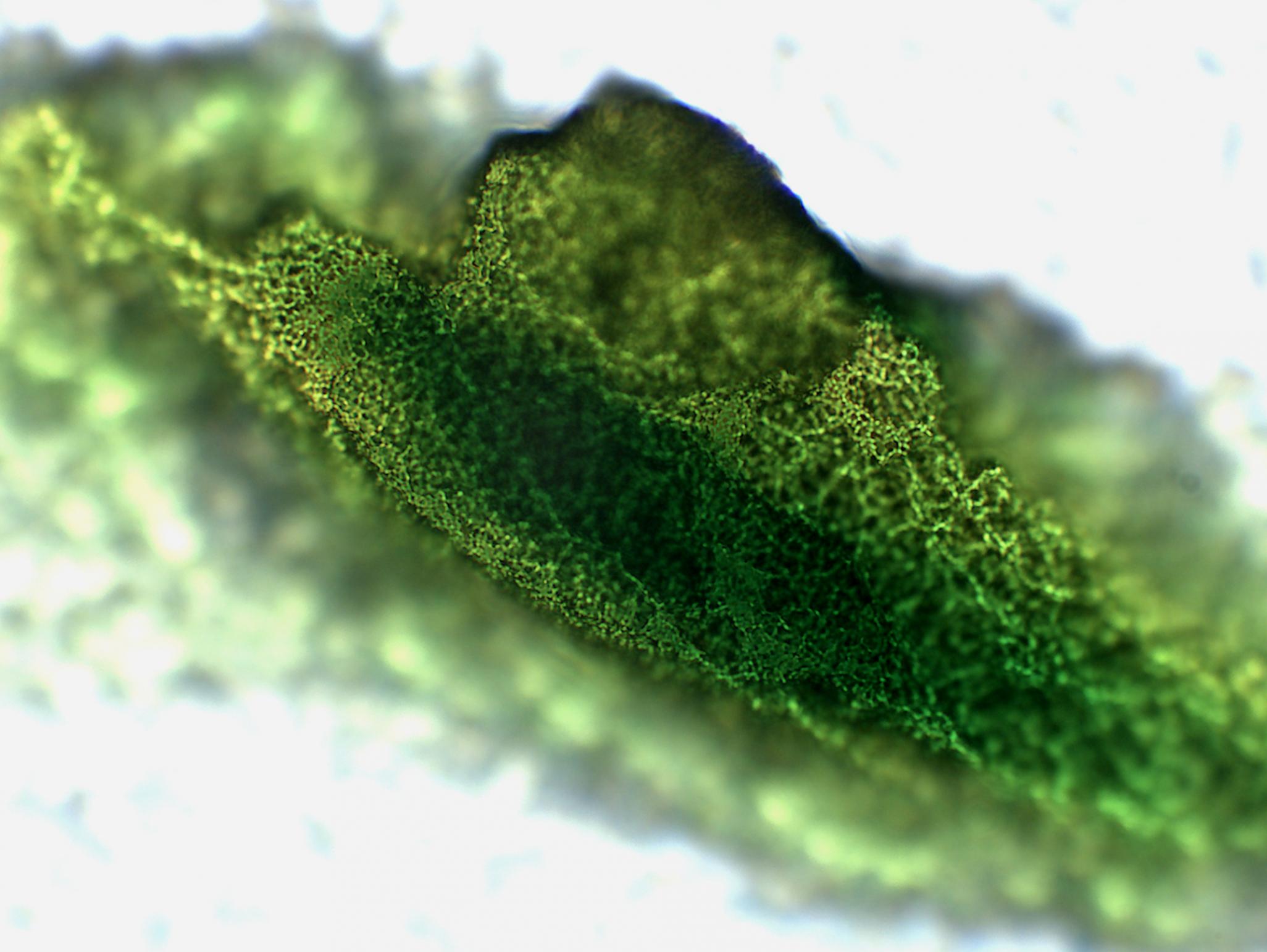
Cyanobacteria are photosynthetic, single-celled organisms. They survived the five last mass extinctions, and can be found in almost all habitats. They are the first photosynthetic organisms from which oxygen originated. Cyanobacteria biomineralization is a metabolic reaction: the absorption of Carbon Dioxide during photosynthesis causes changes in the chemical composition of the water surrounding the bacteria, resulting in mineral precipitation. These minerals bond with sediments and polymers forming strong composites. The geological and ecological significance of cyanobacterial calcification is immense: examples are stromatolites which are known to be the world's oldest known fossils, at approximately 3.5 billion years old.
Cyanobacteria biomineralization is a relatively novel method. My project is inspired by research from the University of Colorado at Boulder. They demonstrated how to create strong bricks by inoculating mineralizing cyanobacteria with a structural scaffold. I built on the published research by working with three different cyanobacteria strains, to demonstrate how the process could potentially be applied locally, and by using a scaffold that is made from algae-derived hydrogels (sodium alginate and agar), and ground shells.
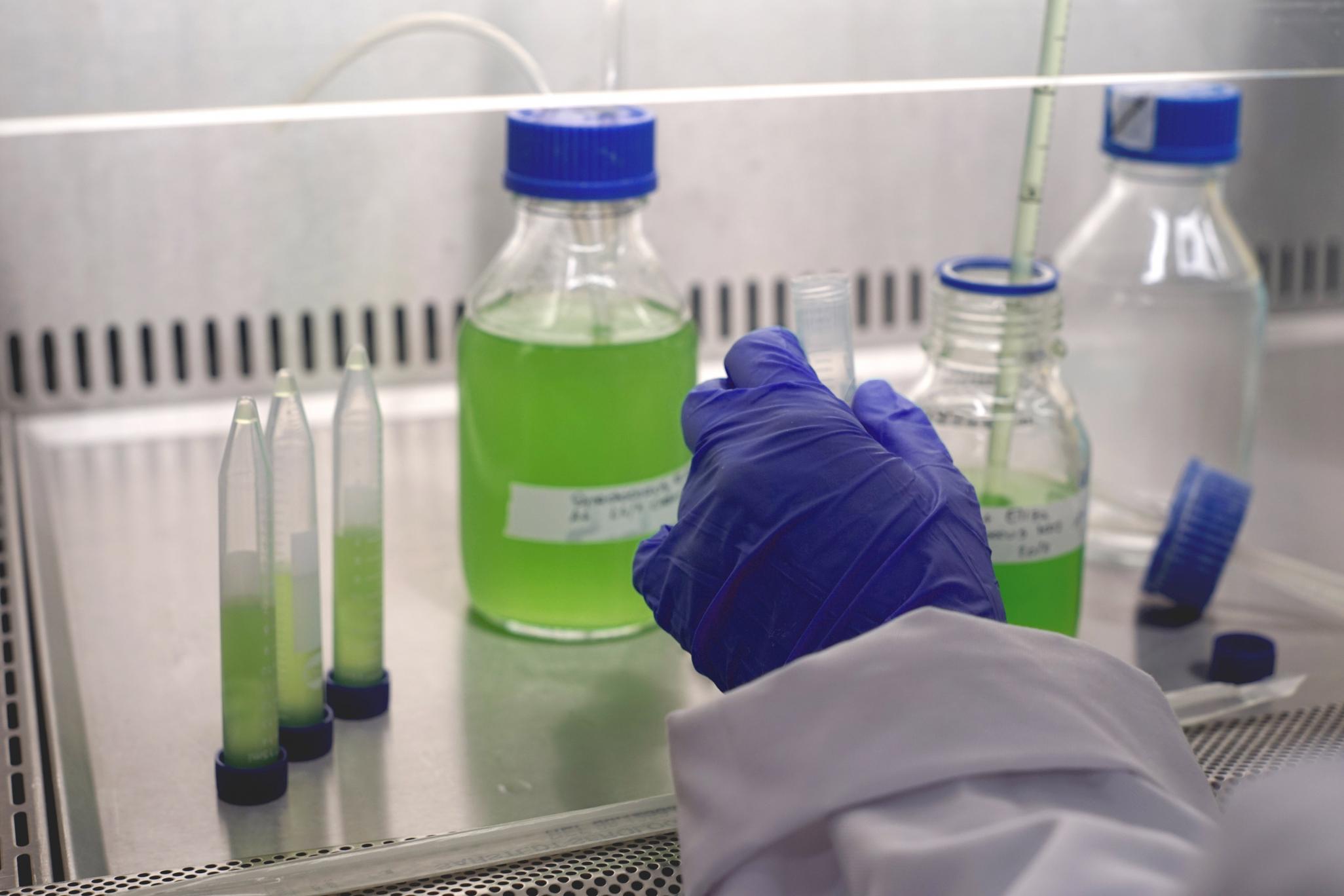
The organism and its needs played a fundamental part in my design approach and contributed to the final aesthetics, which are partially dictated by the way this organism binds its substrate. The final shapes of the sunglasses are inspired by patterns viewed during microscopic observations of my cyanobacteria strains, merged with my personal design ideas for the frames.
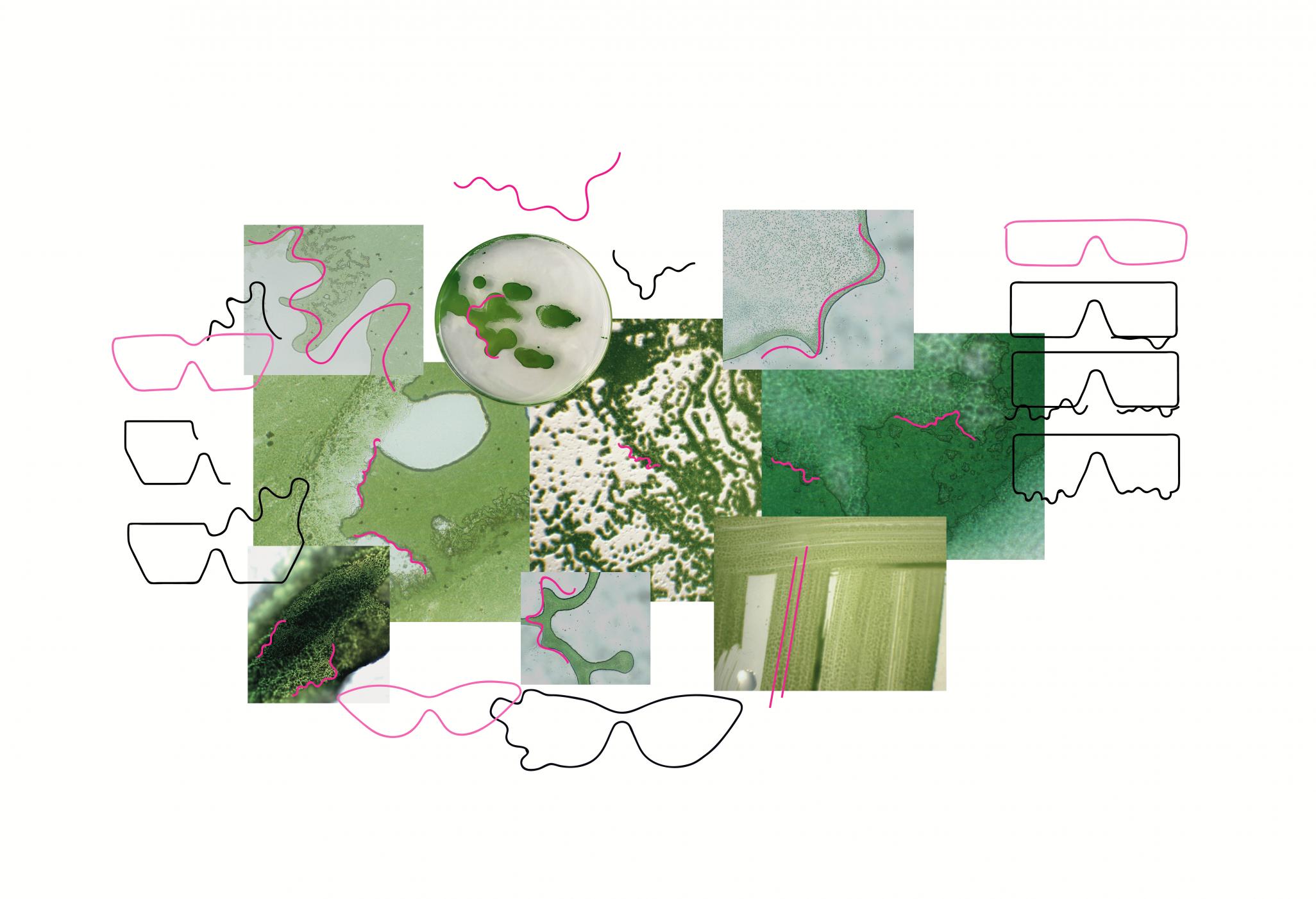
No two samples are alike and despite uniformity in the process, unruliness in the form is obvious, depending on the materialization coming from a living system. This is particularly noticeable in the pattern of the base, created by using biomineralized samples as a substrate, to demonstrate their remanufacturing property. The temples and front of the frame are made of biomineralized material, while cyanobacteria pigment phycocyanin was used as a print.
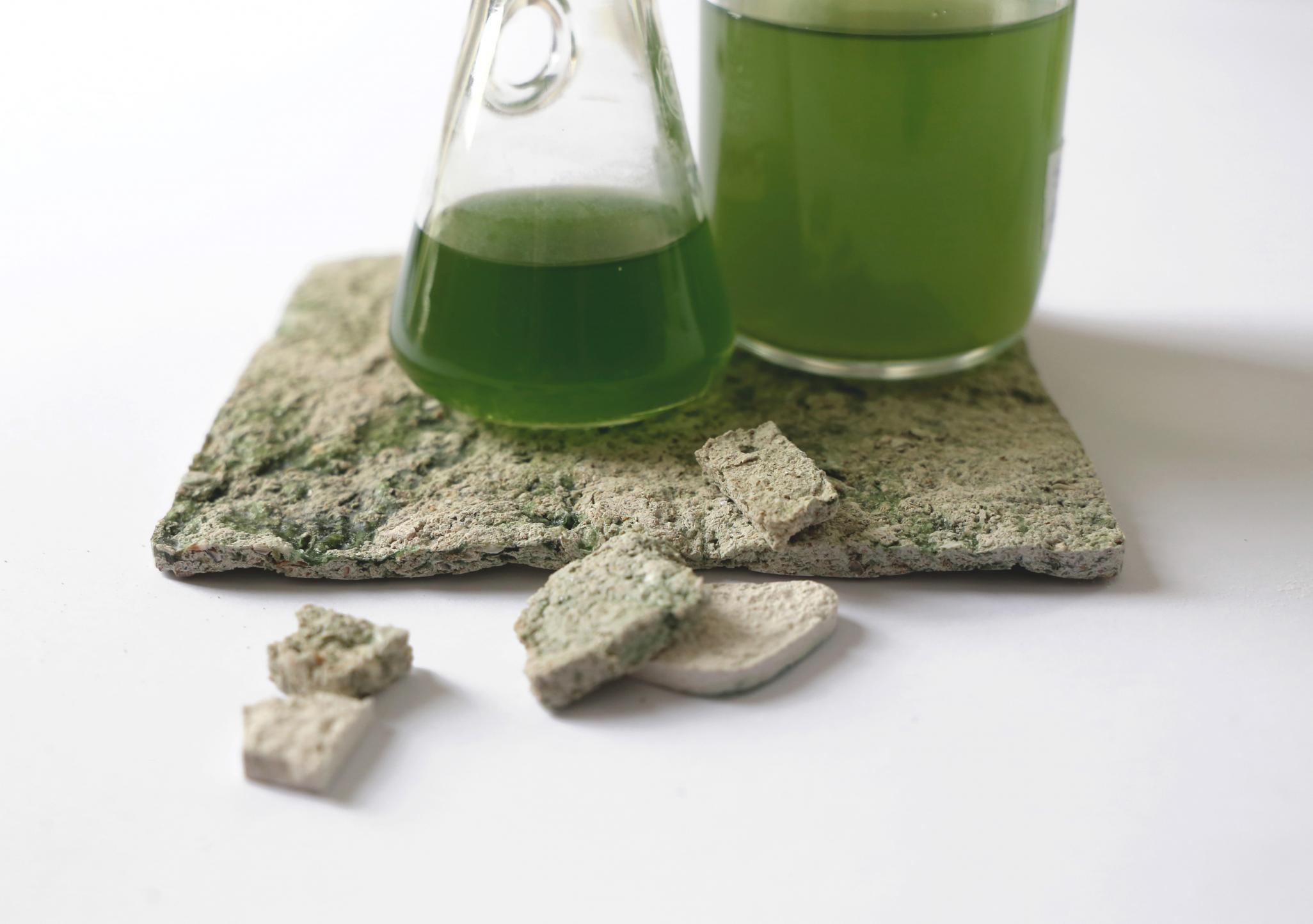
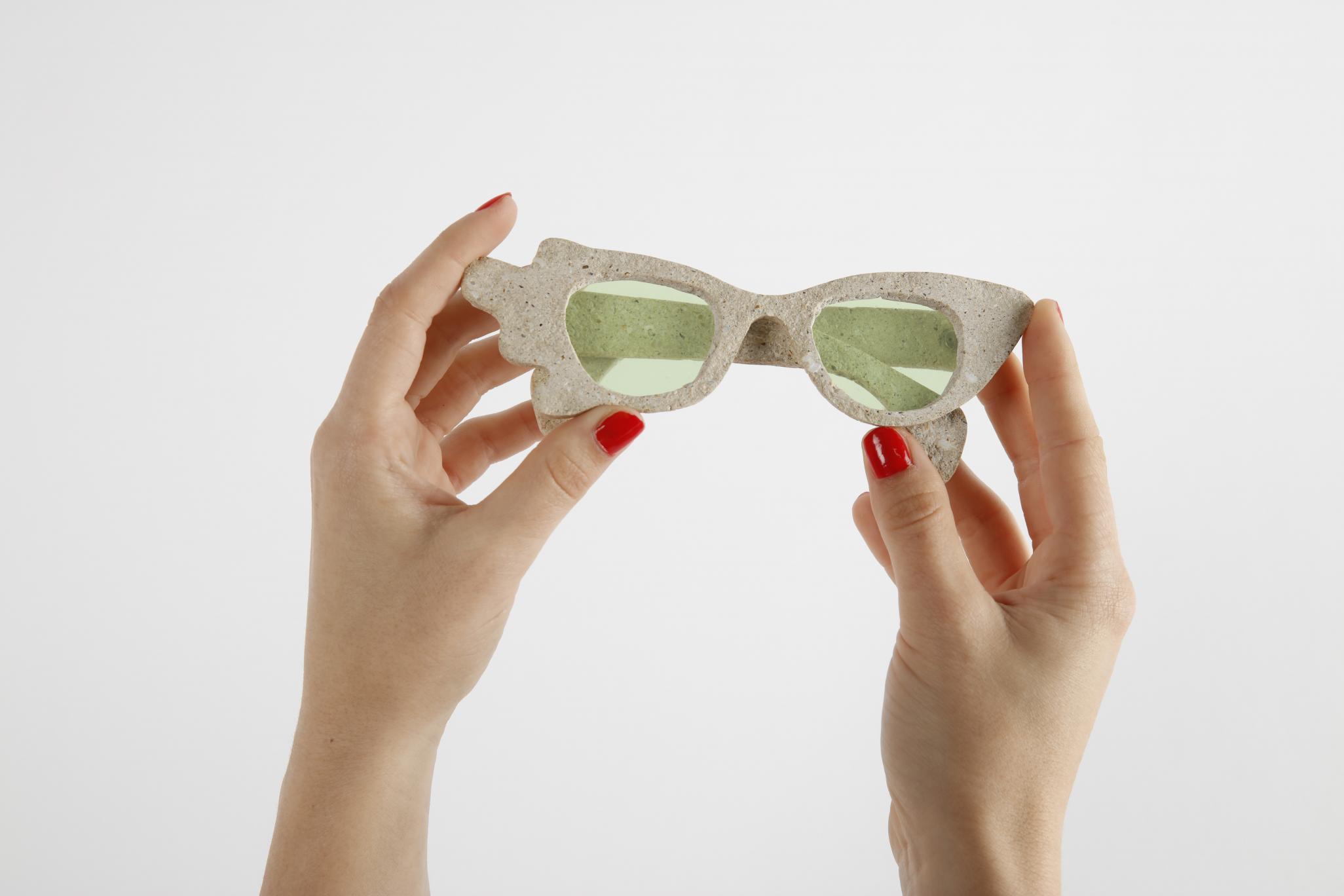
To further develop this biofabrication process and its potential, I identified the main future research topics:
- Enhanced biomineral precipitation, through further understanding of the biochemical processes that promote calcification;
- Optimization of carbon absorption during growth to offset production emissions and explore a carbon-negative possibility;
- Finding an alternative to the centrifuge, which currently consumes energy and makes the process less accessible;
- The possibility of extruding the material with high precision – eliminating the need for moulds and hinges.
In order to support my research, I have been co-supervised by Dr. Paolo Bombelli, Postdoctoral Researcher from the Department of Biochemistry at the University of Cambridge (UK) and I have been consulting specialists from scientific institutions in the UK (UCL, Imperial College, and the British Geological Survey). This project was conducted as part of my MA Biodesign, Central Saint Martins UAL. Tutors: Nancy Diniz, Alice Taylor, Victoria Geaney, Shem Johnson, Julian Jirau, Carole Collet. Co-Supervisor: Dr. Paolo Bombelli. Special thanks: Dr. Megan Barnett, Prof. Saul Purton, Freddie Elborne (MONC). Co-Supervisor: Dr. Paolo Bombelli. Special thanks: Dr. Megan Barnett, Prof. Saul Purton, Freddie Elbourne (MONC).
|